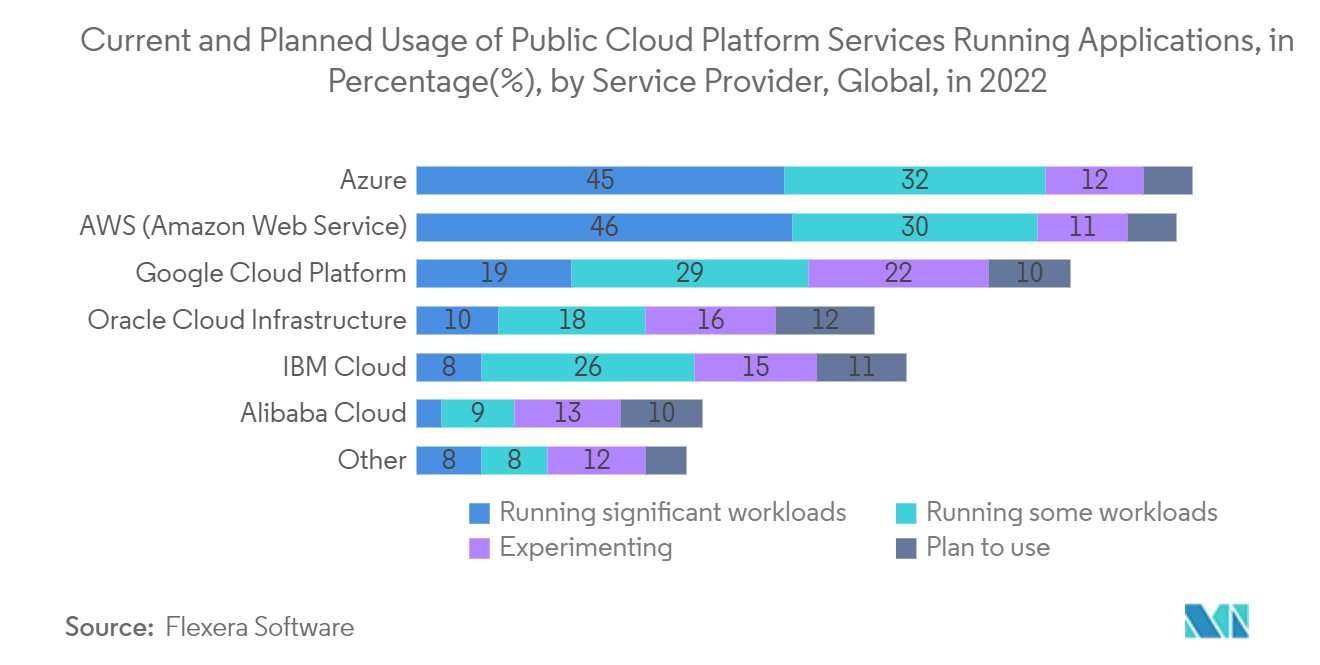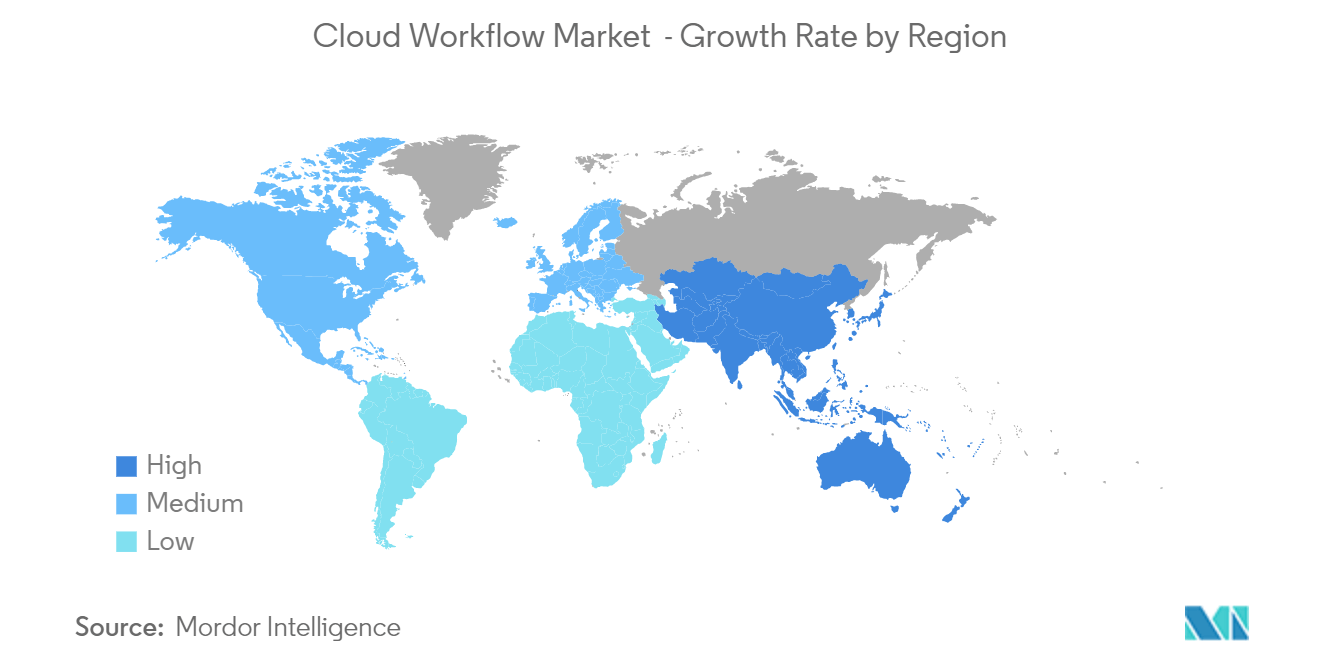Market Trends of Cloud Workflow Industry
Growing Adoption of Cloud Based Solutions Drive the Market Growth
- Because of the increased need for optimized corporate operations, the cloud workflow market is growing pace. Organizations are burdened with repetitive work procedures that reduce productivity and increase the time it takes to complete business operations; as a result, they are increasingly considering transforming modern cloud workflows to simplify business processes and assist management in making effective decisions. Processes were traditionally carried out manually, which took a long time and money and was prone to errors due to the manual work involved. Businesses can automate processes due to cloud workflow solutions, resulting in enhanced productivity.
- Cloud computing offers enterprises flexibility when their requirements change and the ability to scale down operations and storage facilities as needed. Furthermore, the pay-per-use pricing strategy allows large organizations and SMEs to leverage cloud computing solutions benefits.
- SMEs are rapidly moving from their traditional on-premises solutions to the cloud. With the choice of using workflow solutions on the cloud, the Cloud workflow market has witnessed an increase in the deployment of cloud-based workflow solutions by SMEs and large enterprises.
- However, technology is becoming increasingly important in numerous industries, including BFSI, Telecommunications and IT, Retail and E-Commerce, Government, and Healthcare. Several businesses have been increasingly adopting cloud technologies to maintain effective organizational functioning.
- Furthermore, when firms migrate from conventional workflow to cloud-based workflow procedures, the cost of operating and maintaining IT systems in a company is reduced, which propels the growth of the cloud workflow market.

North America is Expected to Register the Largest Market
- North America considers a significant chunk of the cloud workflow market. It is one of the most forward-looking regions in terms of cloud adoption. It forms developed economies such as the United States and Canada. Besides, North America accounts for the largest market share due to the growing adoption of the latest technologies, growing investments in digital transformation, and expanding gross domestic product (GDP) in North American countries.
- A survey by Cisco stated that 69% of the IT decision-makers support BYOD as a real interest in workplace policy as it saves operators time. In the United States' IT sector, it was anticipated that in the past three years, BYOD adoption saw 44.42%. With the expanding number of mobile workers in businesses and workplaces, there has been a consequent increase in the data generated and managed. This will encourage the cloud workflow market's growth over the forecast period.
- Countries in the region, such as America and Canada, are quickly advancing in technological transformation. The expanding adoption of cloud computing amongst companies and mounting competition are anticipated to propel the market. It is expected to hold the highest market size due to the new selection of workflow management technology, the residence of top players, and the globalization of cloud services in the region. Furthermore, this region is significantly developed regarding technologies and their application deployments.
- Through research and development, some of the notable players in the region have been able to further the technology. Google inaugurated its first Google Cloud Platform (GCP) field in Canada, with decreased rates for Google Cloud Storage infrequent access and cold storage classes and its nearline storage features for users in the region.
- Small and mid-size enterprises (SMEs) in the US often have IT requirements that are unique in themselves. In most cases, they require powerful, integrated tools without the complexity of larger corporations' solutions. In such instances, cloud ERP is a classic SaaS solution that is simple, affordable, and scalable. It is designed to meet SMEs' growing business needs and retain their competitiveness.


